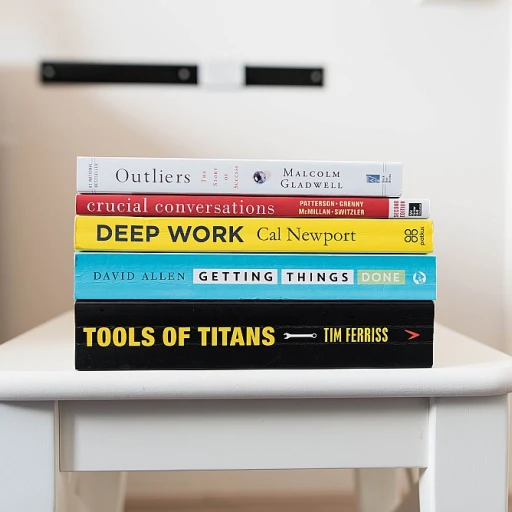
Understanding the Johari Window Technique
Exploring the Concepts and Origins of the Johari Window
The Johari Window technique is a well-regarded model used to improve self-awareness and foster effective communication within teams. Developed in the 1950s as a simple yet profound tool for personal development, it leverages the interaction between personal perception and external feedback to expand an individual’s understanding of themselves. At the heart of the Johari Window model lies a four-quadrant framework. Each quadrant represents a different aspect of self-perception:- Open Area: This quadrant encompasses traits and information about a person that both the individual and others recognize. It's filled with known strengths or characteristics that individuals might share openly with team members.
- Blind Spot: These are attributes recognized by others but remain unknown to the individual. This area grows smaller as one receives feedback, allowing for greater self-awareness and improved team collaboration.
- Hidden Area: Here lies the personal thoughts, feelings, and experiences intentionally kept private. Transparency can enhance communication when individuals choose to reveal more of this quadrant in a supportive team environment.
- Unknown Area: In this quadrant, aspects of personal development that remain undiscovered by both the individual and others reside. Uncovering these aspects can present an opportunity to learn and grow.
The Role of Self-Awareness in Continuous Learning
The Importance of Self-Awareness for Continuous Learning
Self-awareness is a key component of continuous learning, serving as a foundation for personal and professional growth. When individuals understand themselves better, they can identify strengths and weaknesses, paving the way for targeted development. The Johari Window technique amplifies this self-awareness by highlighting various aspects of one’s personality through its four quadrants: the open area, blind spot, hidden area, and unknown. One of the pivotal facets of the Johari model is the open area, where individuals share information that is both known to themselves and to others. Increasing this quadrant by expanding what is shared with team members not only helps people learn about themselves but also enhances team collaboration. As individuals become more transparent about their thoughts and feelings, the potential for meaningful communication grows, allowing for increased personal development. The blind spot, or blind area, represents what team members know about a person that the person is unaware of. Continuous learning thrives on the feedback that illuminates these blind spots. Constructive feedback can transform these unknown elements into recognized strengths or areas of improvement, turning potential weaknesses into opportunities to learn. In the realm of hidden areas, individuals often conceal certain thoughts or feelings. As people become more comfortable within their team, selectively sharing these hidden characteristics can foster greater trust and better communication. The aspect of the unknown area in the Johari Window can also spur personal growth. This quadrant includes qualities or experiences that remain undiscovered by both the individual and others. Engaging in exercises designed to reveal these unknown traits allows for new self-discovery and growth, which are essential in a continuous learning environment. By utilizing the Johari Window Technique, individuals can systematically explore these elements to boost self-awareness, crucial for empowering communities through local training programs. Self-awareness doesn't just increase personal satisfaction; it resonates within professional settings, creating a culture of openness and shared growth.Practical Steps to Implement the Johari Window Exercise
Steps for Implementing the Johari Window Exercise
When embarking on the journey to enhance self-awareness through the Johari Window, it's essential to understand the practical aspects of implementing this valuable exercise. Each step is designed to foster openness and ultimately advance personal development and team collaboration.- Gather Your Team: Start by assembling a group of trusted team members. This group will provide valuable insight into your open area and help identify hidden areas or blind spots. Remember, open communication is crucial in this process.
- Create a Safe Environment: Fostering a secure and supportive atmosphere encourages team members to share thoughts and feelings without fear of judgment. This is pivotal in expanding both the open area and addressing unknown areas within the window model.
- Select Adjectives: Use a predetermined list of adjectives as a template. Each person selects adjectives that they believe describe themselves, which then contributes to an understanding of their blind area, hidden area, and other quadrants within the window exercise.
- Share Feedback: Team members offer constructive feedback and share selected adjectives they associate with the individual. This can reveal blind spots and aid in personal development by shifting unknown areas to known ones.
- Reflect and Discuss: Engage in an open discussion about the feedback provided and how it aligns or contrasts with self-perceptions. This dialogue is crucial for individuals to gain insights and forge opportunities to learn from their peers and enhance self-awareness.
Benefits of the Johari Window in Professional Settings
Maximizing the Johari Window in Professional Settings
Incorporating the Johari Window model into professional settings can greatly enhance communication and team dynamics. By focusing on increasing the open area, teams encourage transparency and promote team collaboration. Here's how the Johari Window technique can be beneficial in a professional environment:- Team Building: The Johari Window is an invaluable tool in team building exercises, as it helps team members share their thoughts and feelings openly. This sharing fosters trust and strengthens relationships within the group, ultimately improving group cohesion and teamwork.
- Enhancing Communication: By consistently engaging in the window exercise, individuals are encouraged to provide and receive constructive feedback. This ongoing communication process reduces the hidden area and helps uncover unknown areas, minimizing misunderstandings and enhancing overall communication.
- Uncovering Blind Spots: Through the feedback mechanism, the model helps in identifying the blind spot, or blind area, for each person. Knowing one's blind spots can lead to personal development, as individuals become more aware of the adjectives that others use to describe them, which may otherwise be hidden from their own understanding.
- Leadership Development: Leaders can utilize the Johari Window to better understand their team members and discover areas for mutual development. By recognizing the strengths and weaknesses within their teams, managers can better assign tasks that align with individual capabilities.
- Promoting Inclusivity: By encouraging open sharing and valuing diverse perspectives, the Johari technique can create an inclusive environment where every team member feels valued. This openness can lead to a more collaborative work atmosphere and reduce the blind spots caused by cultural or personal differences.
Challenges and Considerations
Overcoming Common Limitations and Obstacles
Applying the Johari Window technique effectively within a professional setting can present several challenges. Recognizing these can help individuals navigate them more successfully. Here's a look at some of the common obstacles you might encounter:- Resistance to Feedback: Some team members might be hesitant to provide or accept feedback. This can occur if people feel threatened by criticism or are not used to sharing personal insights. Encouraging a culture of open communication where constructive feedback is the norm can actively help in overcoming this barrier.
- Bias and Misinterpretations: The adjectives and feedback provided during the exercise might be influenced by personal biases. It’s crucial to approach the feedback with an open mind, understanding that this input is just one point of view and not an absolute truth.
- Exploring the Unknown Area: The unknown quadrant of the Johari Window, which is typically unexplored during the exercise, remains a challenge as it involves both unknown personal traits and potentials that neither the person nor others recognize. This requires a commitment to ongoing personal development and perhaps external coaching.
- Maintaining Engagement: Keeping team members engaged in the exercise can be difficult, especially if they do not immediately see the benefit or feel uncomfortable sharing thoughts and feelings. Highlighting the potential for personal and team growth can stimulate interest.
Real-Life Applications and Success Stories
Transformative Experiences in Real-World Scenarios
Incorporating the Johari Window technique into everyday practices has proven to be a game-changer for many teams and individuals. By focusing on enhancing self-awareness, this model facilitates personal development and effective team collaboration. Here are some real-life applications and success stories that highlight its impact:
- Team Building and Communication: A tech company used the Johari Window model to improve communication among team members. By identifying their open area and blind spots, team members were able to share constructive feedback more openly. This led to a significant improvement in team dynamics and project outcomes.
- Personal Development: An individual in a leadership role utilized the Johari Window exercise to better understand their hidden area. By selecting adjectives that resonated with their personal and professional identity, they received valuable insights from peers. This feedback helped them address unknown areas and enhance their leadership skills.
- Feedback and Growth: In a healthcare setting, a team implemented the Johari Window to facilitate open communication among staff. By reducing the blind area through regular feedback sessions, team members were able to address blind spots and improve patient care. This approach fostered a culture of continuous learning and development.
These examples illustrate the power of the Johari Window in various professional settings. By focusing on the open area and addressing the unknown area, individuals and teams can unlock new opportunities for growth and development. The model not only enhances self-awareness but also strengthens team collaboration, making it an invaluable tool in any organizational context.












